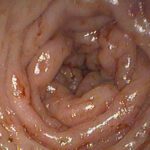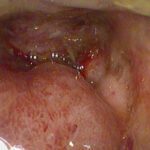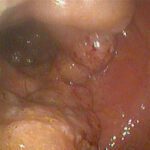Endoscopy is a non-invasive testing and treatment procedure that uses various length light-emitting tube-like instruments (endoscopes) to evaluate internal areas of the body, all without the need for surgery. Endoscopes have a miniature camera embedded into the tip which allows a non-invasive view deep inside the body. There are different types of endoscopic procedures, each for a specific organ or body part. In this blog, we discuss colonoscopy, which is endoscopy of the colon (large bowel).
What is Colonoscopy?
The endoscope is 120 cm in length, and flexible to maneuver around corners. The internal details of the rectum and colon are displayed in real time on a high-definition monitor, and both still photos and videos can be recorded.
Colonoscopy is a specific type of endoscopy that evaluates the rectum and large bowel (colon).
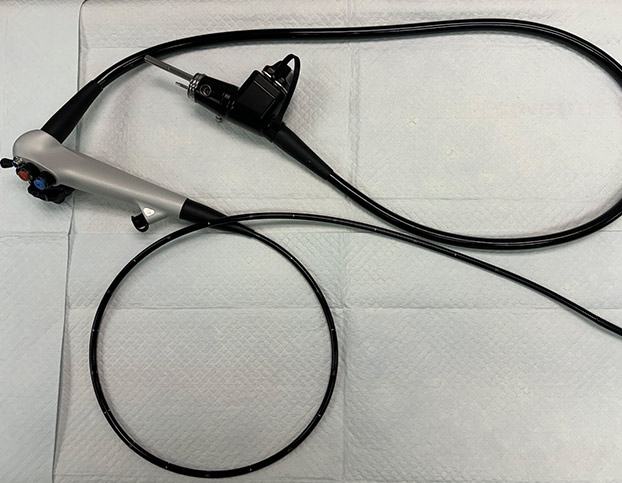
Why Your Pet Might Need a Colonoscopy
Unlike in humans where regular colonoscopy screening for colon cancer is advised, for dogs and cats colonoscopy is typically recommended when your pet exhibits a problem or symptom. Fortunately for our pets, colon cancer is much less common (potentially due to dietary habits and a normal shorter life-expectancy) so regular colonoscopy screenings are not as important and typically not recommended. Therefore, colonoscopy is usually recommended when symptoms are noted, or diseases are thought to be present.
- Evaluate unexplained symptoms, such as:
- Straining to defecate
- Bloody or mucus-covered stools
- Painful defecation
- Rectal prolapse (rectal tissue protrudes through the anus)
- Recurring constipation
- Fecal incontinence
- Your veterinarian detects a mass or polyp when feeling inside the rectum
- Diagnose a variety of diseases, such as:
- Polyps, tumors and cancers of the rectum or colon
- Rectal strictures
- Inflammatory colon disease
- Granulomatous colitis (Boxer colitis)
- Fungal infection (Histoplasmosis)
3. During a colonoscopy, small samples (biopsies) of any tissue that appears abnormal (swollen, inflamed, cancer) can be taken directly through the endoscope without surgery. Any samples obtained during the procedure are sent to a veterinary pathology laboratory for analysis (histopathology).
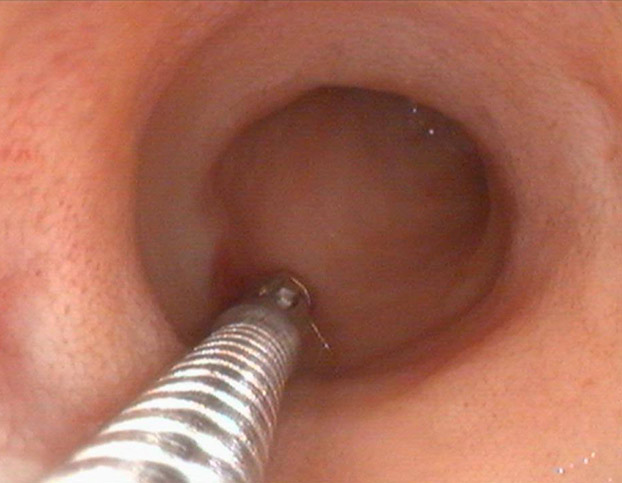
What Pet Parents Need to Know Before the Procedure
Because your pet’s health is of the utmost importance, there are several important steps prior to performing a colonoscopy:
- If you have ever had a colonoscopy yourself, you know that it is important to “clean out” your colon the night before the procedure. The same is true for your pet: their colon must be empty of fecal material before a colonoscopy. We recommend a very different protocol than the protocol you may have followed for your last colonoscopy and will go over those details with you when scheduling your pet’s colonoscopy.
- A thorough physical examination is performed by a veterinarian to detect any new or unknown health issues that your pet may have.
- Recent pre-anesthetic blood tests are needed to ensure your pet is safe for anesthesia.
- If your pet has heart or respiratory concerns, pre-anesthesia EKG and thoracic X-rays may be important
How is a Colonoscopy performed?
The following outlines the steps in performing a complete upper GI endoscopy:
- General Anesthesia: Ensure comfort and cooperation. Your pet is continuously monitored while under anesthesia by a veterinarian and a registered veterinary technician (RVT). Oxygen levels, breathing, heart rate, EKG, blood pressure and temperature are continuously monitored. Intravenous (IV) fluids are given throughout the procedure to support blood pressure and the kidneys.
- Left Lateral Recumbency Position: Once anesthetized, your pet is positioned laying on their left side.
- Rectum Evaluation: The endoscope is carefully inserted into the rectum (this is the area between the end of the colon and the anus) and evaluated for masses, tumors and polyps.
- Colon Evaluation: The endoscope is slowly advanced into the colon, and all aspects of the colon are evaluated, including the descending, transverse and ascending sections, in addition to the openings to the cecum (think: appendix) and the ileum (end of the small intestine). Any abnormal tissue is biopsied.
- Recovery from Anesthesia: During the colonoscopy, air is insufflated (infused) to distend the colon to allow safe maneuvering of the endoscope and complete visualization of the colon lining (mucosa). Insufflated air remaining in the colon is suctioned prior to removing the endoscope and your pet being awakened from anesthesia.
What Pet Parents Need to Know After the Procedure
- Coloscopy is an outpatient procedure, and your pet will go home the same day.
- The procedure is not painful, and pain relievers are generally not needed.
- Your pet may be groggy or tired for 6-8 hours — this is normal. Your pet should stay in the house and be observed during this time; they may need help on stairs and getting in/out of the car.
- Your pet can eat a small meal after arriving home.
- Strenuous exercise should be avoided for the first 12 hours after the procedure. It is important to allow any remaining insufflated air to be naturally expelled to avoid stomach/intestinal bloat.
- Your pet may have a very small amount of bloody stool immediately following the procedure. This is normal and is caused by minor bleeding at the time any biopsies were taken.
- The following day, normal activity and lifestyle may resume.
- Results of any biopsies or other samples can take 5-7 days and we will call you to discuss.
- If you have any concerns or questions after returning home with your pet, please contact us for advice.
Coloscopy vs. Surgery
Colon surgery in dogs and cats can be a complex with potential significant complications. Fortunately, colonoscopy offers benefits over surgical evaluation of the colon, including:
- Non-invasive — no incisions, cutting, scarring
- Reduced risk of serious complications
- Short procedure time, short recovery time
- Minimal discomfort
- Outpatient procedure, no lengthy or overnight hospital stays
Endoscopy is our preferred method over surgery for evaluating:
- Visual inspection of the rectum and colon
- Obtaining diagnostic samples (biopsies) of the colon and rectal mucosa
- Treatment of rectal strictures with balloon dilation
Your Pet’s Safety and Your Confidence is Our Priority
In conclusion, colonoscopy is a valuable tool in veterinary medicine, providing a minimally invasive method for diagnosing colon diseases. However, like any medical procedure, it has its limitations and risks. We understand that you worry about your furry family member, and we will spend as much time discussing all aspects of the procedure with you prior to the procedure to ensure that you are comfortable and confident. Please contact us if you have questions about colonoscopy or wonder if your pet would benefit from this procedure.
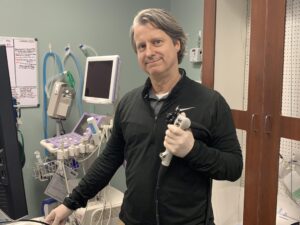
Author:
James Woods DVM, MS, DACVIM (SAIM)
Ph: (912) 721-6410
Contact Us

